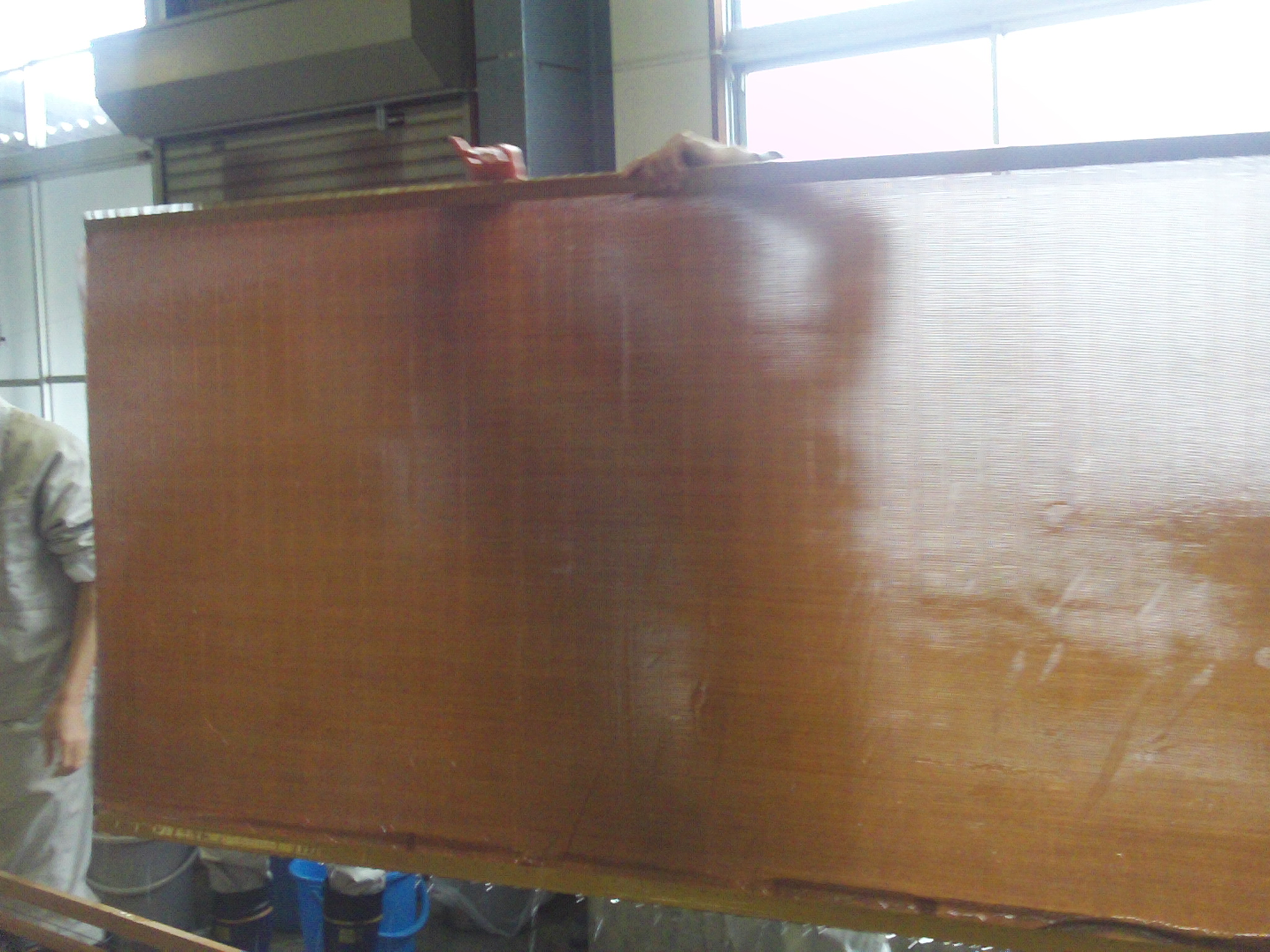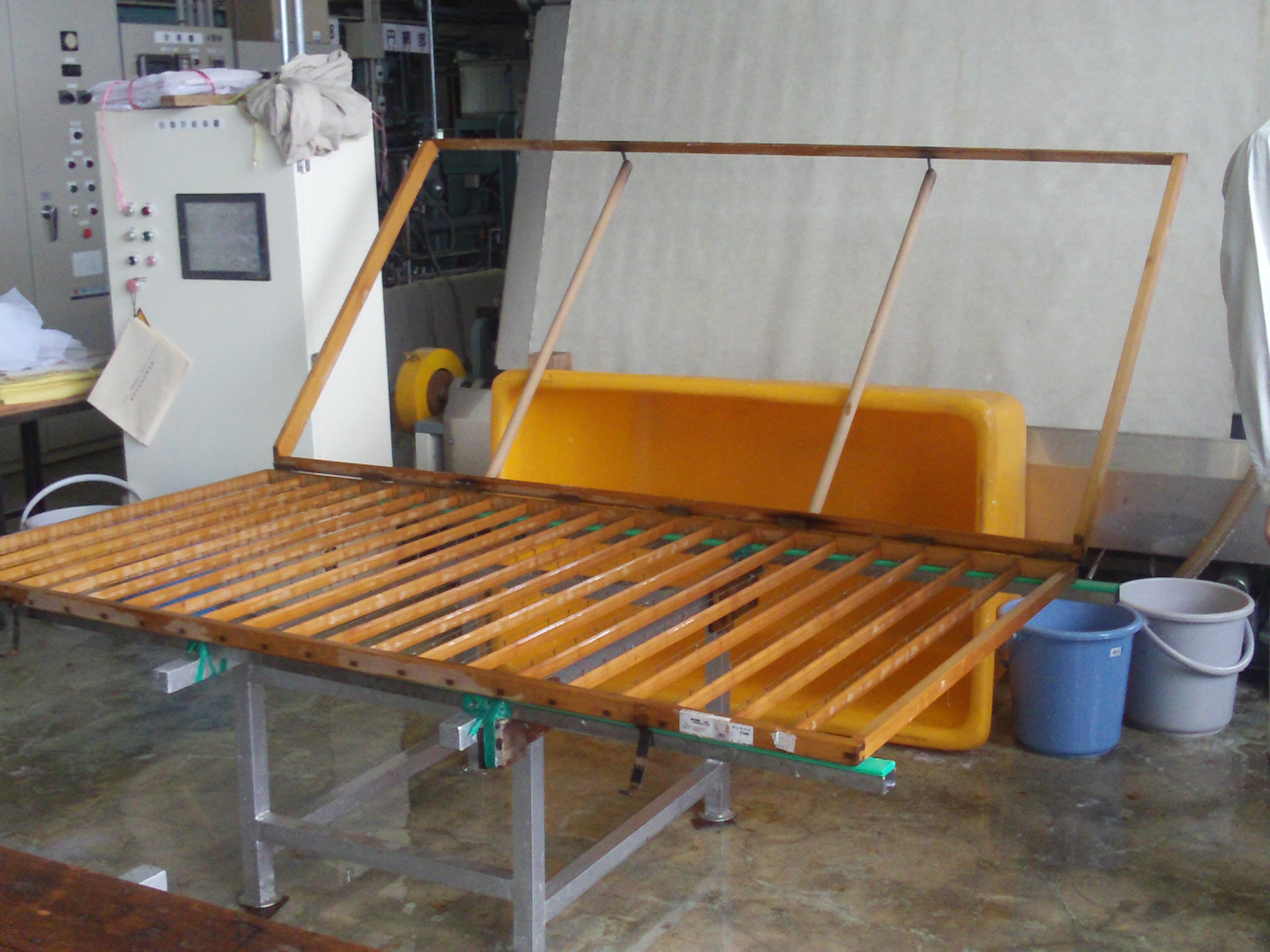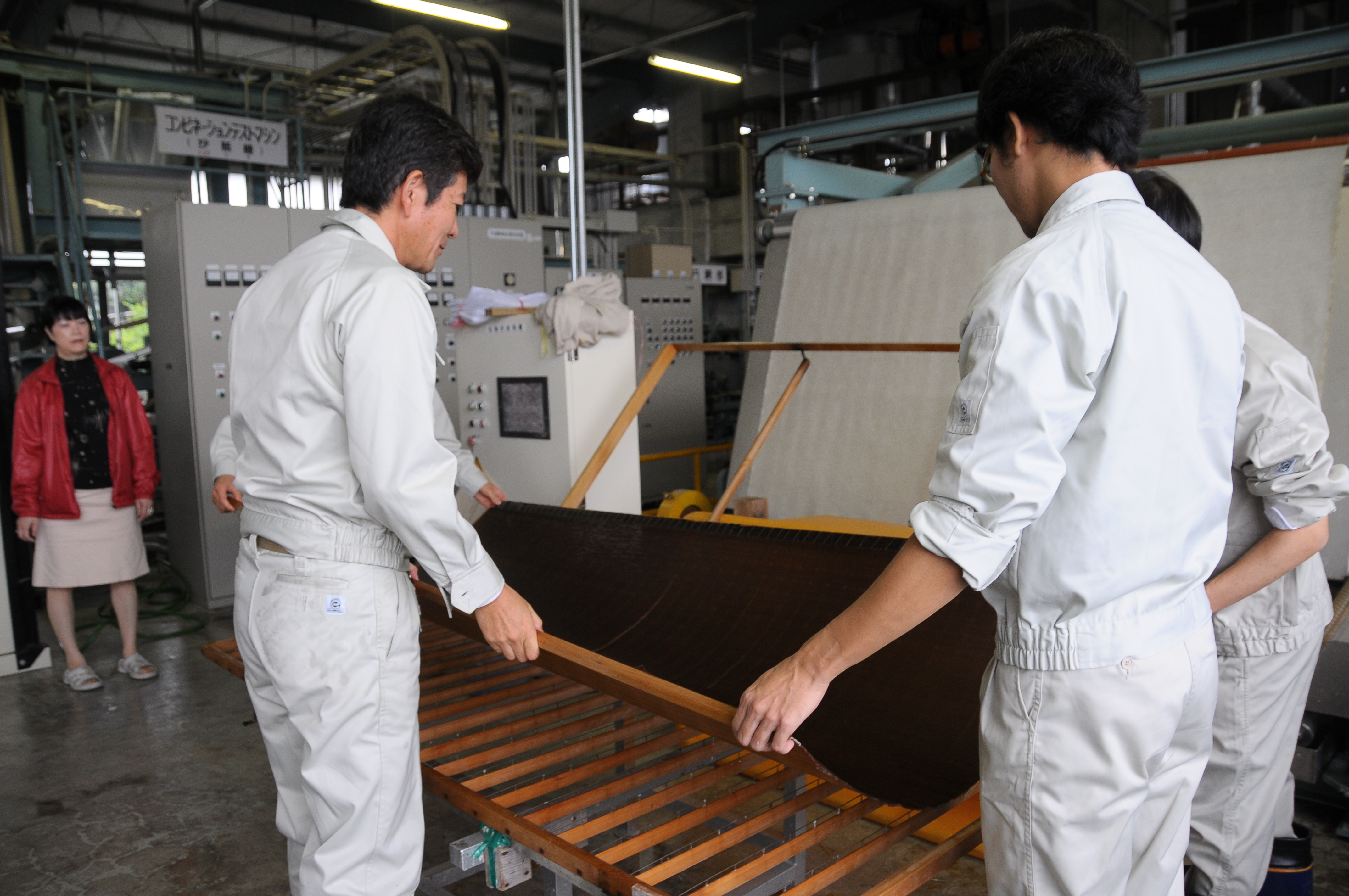I love the Japanese they are so precise and everything is really well planned. It is very important for them that all information are equally distributed to every individual -less margin for error.
If you have not read it yet I have given a short background on large washi paper in my post Making large scale Japanese paper 1. For the Mino Paper Art Residency we were given the opportunity to make large Washi paper that has a similar technique than smaller Washi but without using the Nagashizuki action (swishing the mold back and forth in a set rhythm). Read more about the technique of making washi paper. First the Kozo and Neri is mixed and prepared like usual. We are using a large su and keta that is placed level on a stand. You have to make sure you have drainage underneath your table stand since a lot of water will run through the mold. A pair of Wellingtons is also very helpful!
An added ingredient that you do not have in making smaller washi paper is that you add a silk screen (treated with Kakishibu that is why it look so black on the photo) between the Su and the paper pulp. Makes the paper denser and easier to peel off the paper from the Su.
Watch the video for a demonstration in making these larger sheets.
![]()
[blip.tv ?posts_id=3093549&dest=-1]
You can get really creative once you have the technique down. You can add textures, colors and here I am adding washi paper inlays.








What do you think?